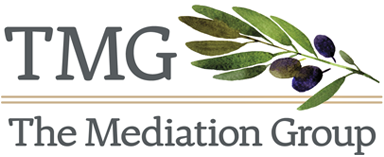Cambridge Leadership Initiative
Cambridge Integrates Leadership and Cultural Competence Learning
By Amy Rebecca Gay

Anyone who has done training knows that there’s a risk: the training goes well, everyone has a wonderful experience — and then nothing changes. As we say in the biz, “Culture eats Change for breakfast.” So when we started working with the City of Cambridge to collaboratively develop and deliver a four-day Cambridge Leadership Initiative (CLI) that focused on leadership and cultural competence training for their 90 top leaders, we deliberately built in processes for participants to identify key lessons and practices. Then, as a Capstone event, we held an Open Space meeting as a way to foster deep cross-functional dialogue about how they can integrate their learning and best practices into the organization as a whole. Here’s an overview of what we did.
The Challenge
Because the group being trained was so large, we divided the 90 participants into four cohorts which then stayed together throughout the entire training. While this created an opportunity for strong groups to form — and those group dynamics supported open learning conversations where participants felt comfortable sharing personal information — it did not foster conversations among the entire group being trained.
We also moved quickly through a lot of subject matter ranging from cultural competence and decision making to collaborative leadership and change management. During the training, we made note of areas participants wanted to take back to the office, but these notes were more like disjointed lists than action plans. So although the Cambridge design team and TMG both had a good sense of what might need to happen, there was no coherent plan for action and no one was accountable.
What we needed was a way to solidify areas of passion by bringing together those people across functions who wanted to engage in concerted action, and we needed to have people connect with particular projects and carry them forward. A process called Open Space fit the bill perfectly.
Open Space Technology
Open Space Technology enables large groups of people to organize themselves around issues that concern them and to have deep dialogue that can create positive change and increased collaboration. It is typically two to three days, though it can be scaled down as I’ll describe, and can be done with as few as 5–10 people and as many as 2,000+.
The process begins with a brief introduction that includes sharing the theme of the gathering, and then participants set the agenda. Anyone may write their topic of interest on a flip chart, and then participants assemble around the topic that interests them the most. Some stay at a single topic for the whole time; others move around and join many topic groups.
Each round of conversation is collected into a book of proceedings that participants review prior to the next round of conversations. This enables further refinement and integration of the agenda. The process ends with participants prioritizing and then creating action plans for those priorities.
Our Process in Cambridge
The theme for the Open Space in Cambridge was, “How do we carry forward the things we have learned in the CLI training?” Our explicit goal was to provide the Cambridge City leadership with the space to proactively plan for integrating their learning and to avoid sliding into the rut of the status quo.
Because we only had a short period of time in Cambridge we created what I’m calling a two-step Open Space. Step one was an Open Space at the end of the fourth day of training within each cohort. We reserved 30 minutes for the participants in each training cohort to do a quick Open Space where they continued the conversations they’d been having, but in a more focused way. These conversations were summarized into a book of proceedings that was emailed to the participants for their review prior to the Capstone event.
Step two, designed in concert with the CLI design team, was the “Capstone,” which was a three-hour Open Space for all 90 participants. First, each training group shared its priorities from the Open Space conversations they had had within their individual cohort, and then they created the agenda for the large group Open Space.
We finished the event by having each subject matter group report on the highlights of their discussion. Then someone who was part of that conversation volunteered to be responsible for organizing next steps. Some of these groups have since met to continue the conversation. Additionally, the steering committee that sponsors the CLI is continuing to hold meetings that extend the discussions.
Conclusion
Any training initiative runs the risk of having minimal impact unless it has A) leadership support and B) intentional processes and structures that support the integration of new behaviors. Cambridge has had enthusiastic leadership support for the Initiative since the start. And together we created a process that coalesced the participants’ needs and desires into affinity groups intentionally focused on integrating new behaviors.
One feature that makes processes like Open Space so successful — and why we believe it was such a good fit as a capstone event for the Cambridge Leadership Initiative — is because the ideas and action plans come from the people who will be doing the work. It is a bottom up process — not top down. As a result, it taps into the group’s energy and passion, and provides the freedom to tailor the action plans in ways that will be most useful to them.
Anyone considering a major training initiative may want to begin by thinking about what kinds of processes will work best for staff to implement what it has learned. A number of approaches may be effective — this illustrates one possible approach. The most important lesson is that implementation needs the same support and care that the training requires. Otherwise, you risk your culture eating your training for breakfast.
